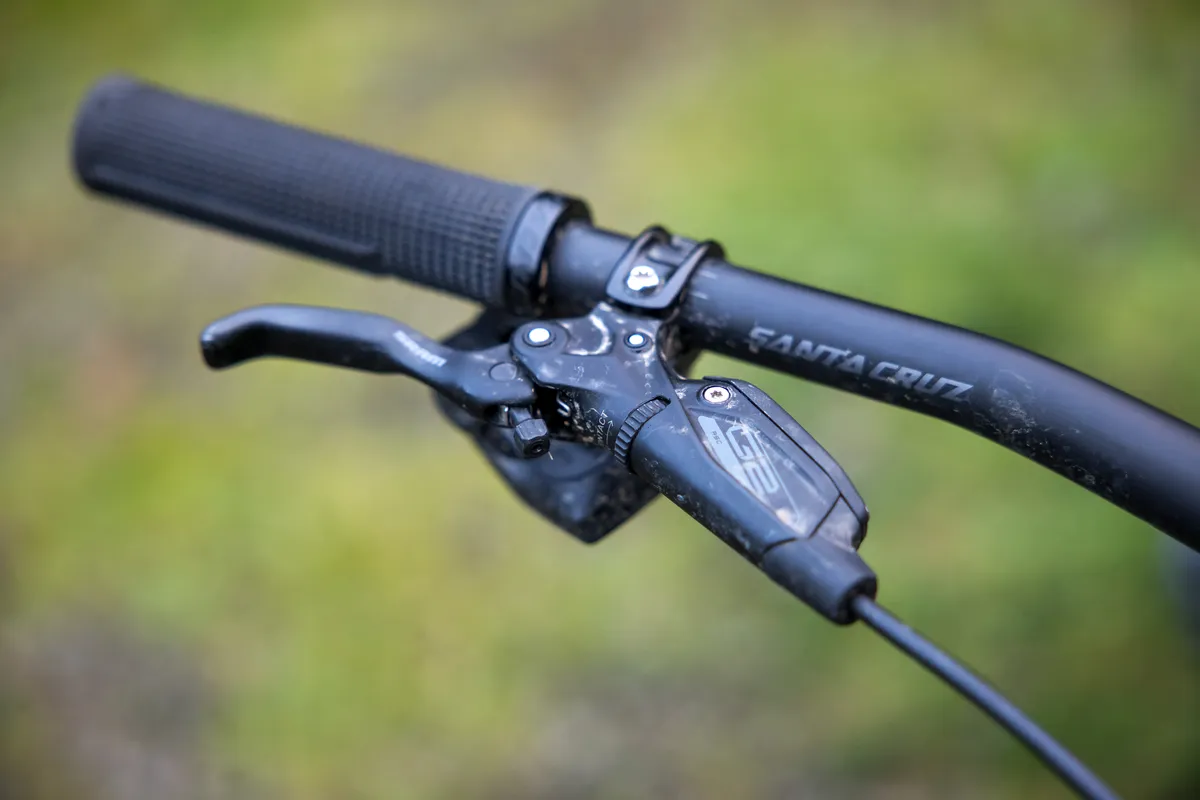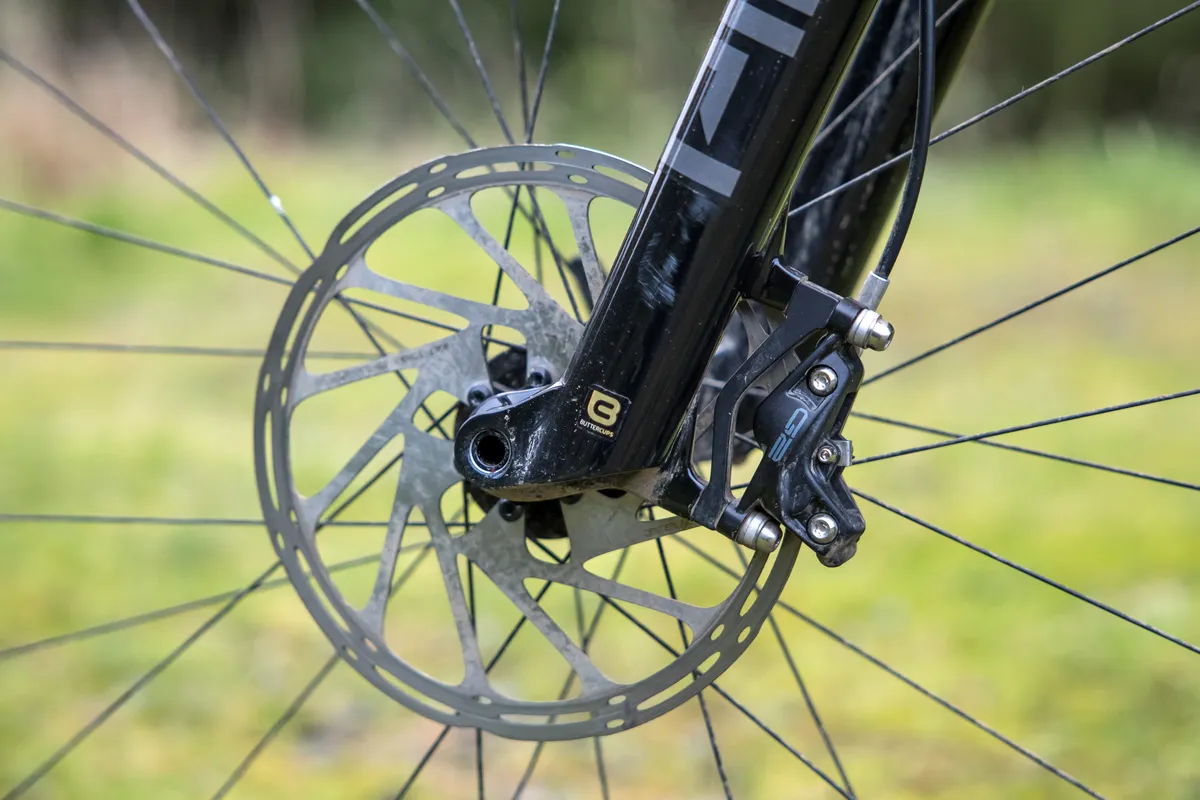Santa Cruz’s 5010 is the brand’s fun-focused short-travel trail bike, designed to bring the trails alive thanks to its nippy geometry and supportive suspension.
This iteration of the 5010 is the last of Santa Cruz’s bikes to make the move from 27.5in front and rear wheels to a mullet setup, where the front wheel has a 29in diameter matched with a 27.5in rear.
Santa Cruz claims this configuration blends two characteristics usually at odds: traction and agility.
The frame has been updated with down tube storage and a shock sag window. It keeps the size-specific chainstay lengths from the 2021 model, but now gets size-specific seat-tube angles.
Its 130mm of rear-wheel travel has increased progression over the old bike and lower anti-squat numbers to increase pop and support, but also sensitivity.
This 5010 CC X01 AXS RSV MX sits atop a six-model range and retails for £9,199.
Santa Cruz 5010 CC X01 AXS RSV MX frame and suspension
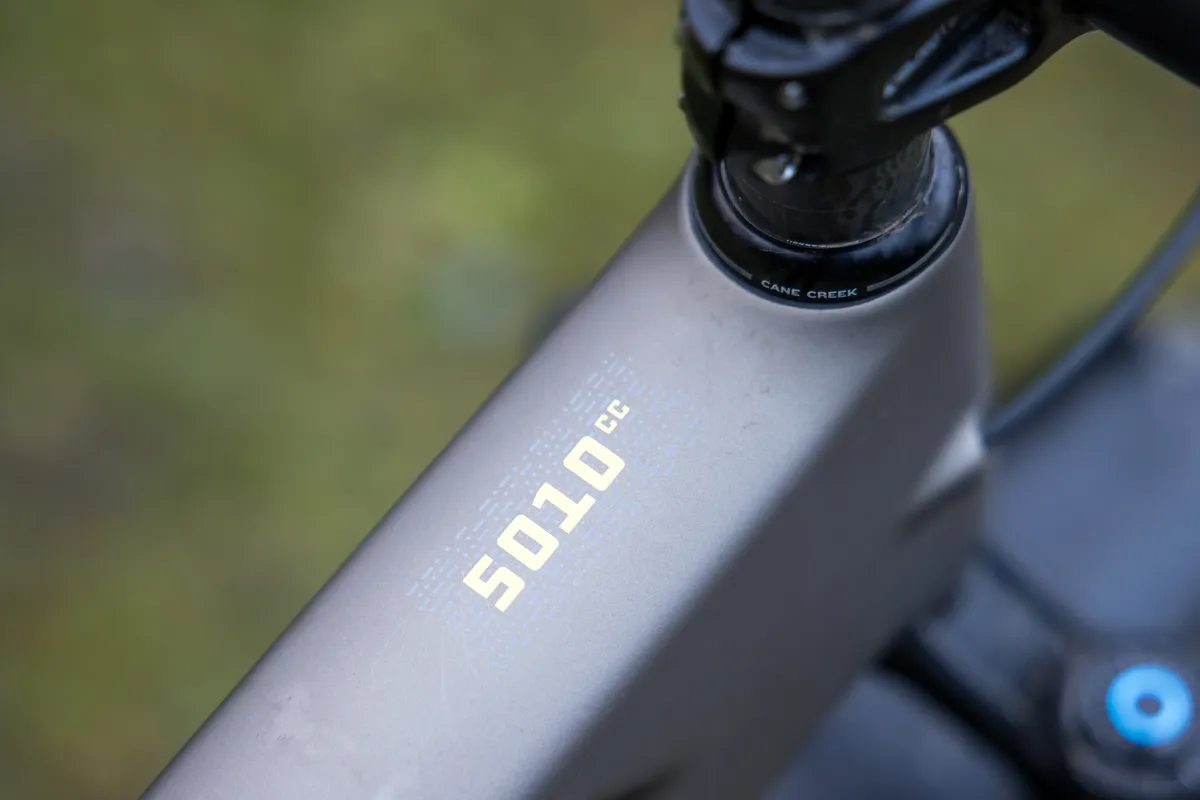
Built from Santa Cruz’s CC-grade carbon fibre, this model of the 5010’s frame is claimed to be lighter than the brand’s C-grade carbon, but just as strong.
Each of the bike’s sizes is claimed to have tailored stiffness; a lighter rider on an extra-small frame should have the same ride feel as a bigger rider on an extra-large.
New for this iteration is the Glovebox, Santa Cruz’s name for internal down tube storage, accessed via a port (that functions as the bottle-cage mount) on the topside of the down tube.
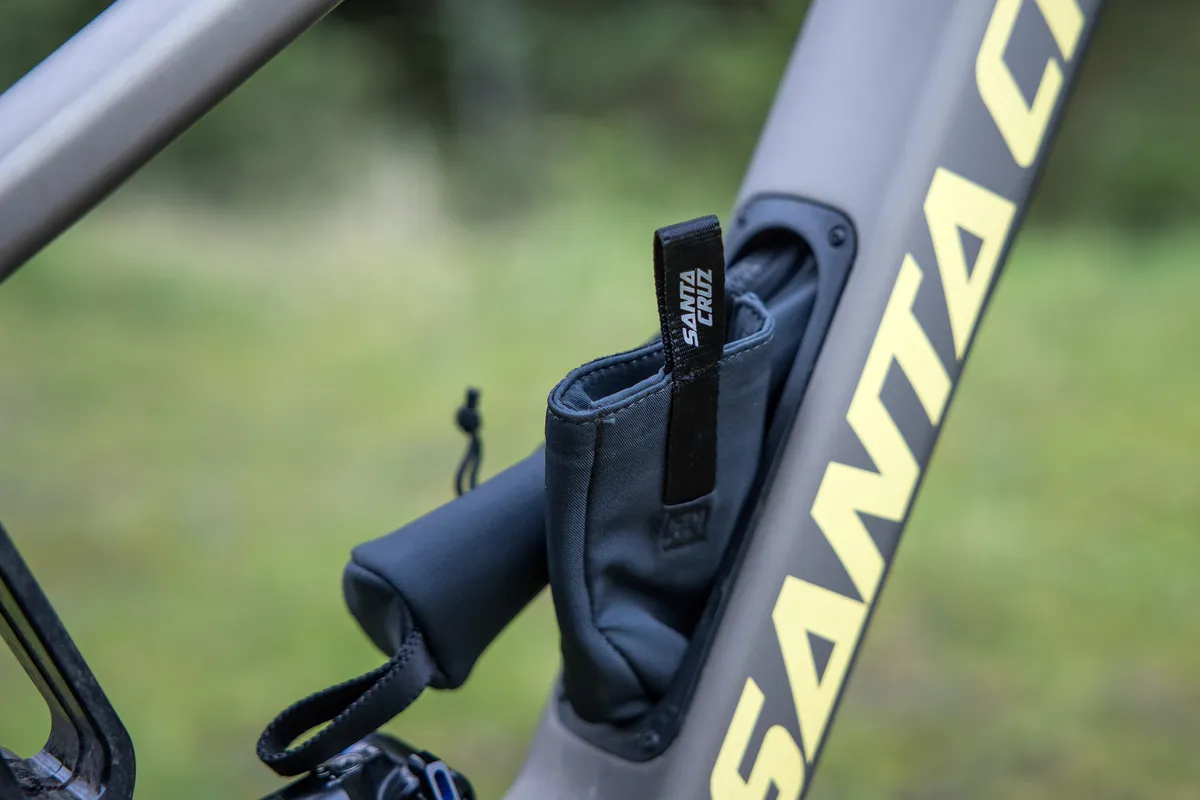
Included with the bike are custom-fitted storage bags, dubbed the Tool Wallet and Tube Purse.
A small cut-out on the side of the shock tunnel means reading sag measurements is now much easier compared to previous iterations of the 5010.
Cables are routed internally from front to back and feature tube-in-tube sleeving.
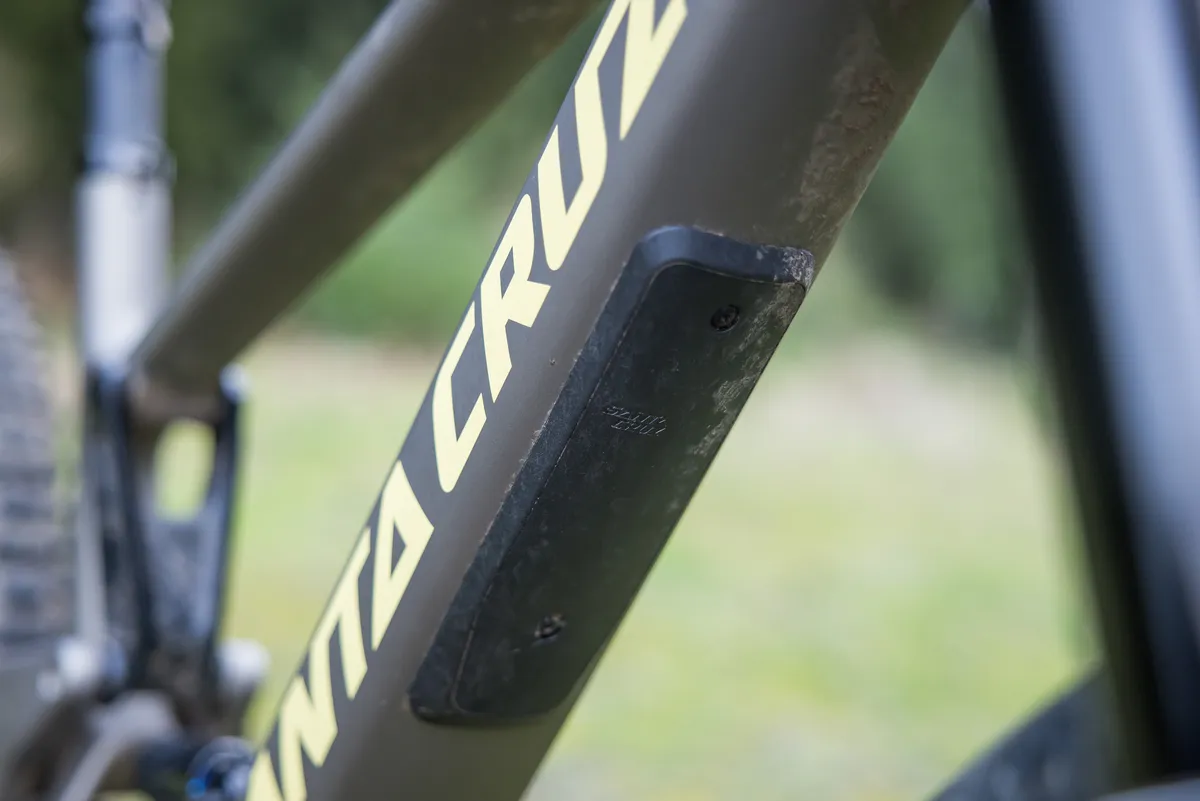
The rear axle uses standard 12x148 Boost spacing and SRAM’s Universal Derailleur Hanger. It has ISCG05 chain guide mounts and a threaded bottom bracket.
Like all of Santa Cruz’s bikes, the 5010’s frame and its bearings have a lifetime warranty.
Suspension kinematics
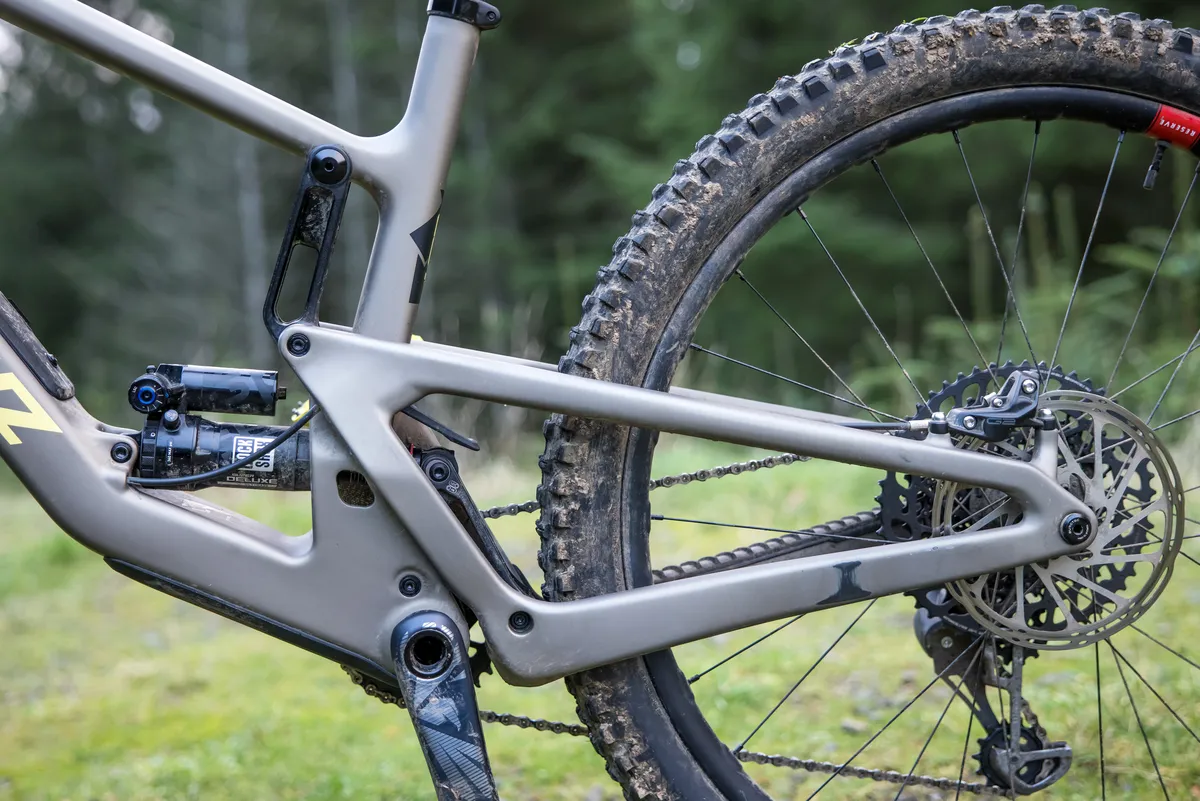
The 5010 doesn’t deviate from the brand’s co-rotating twin-link VPP design, with 130mm of travel, where the lower link drives the shock.
According to Santa Cruz, this 5010 has less anti-squat than the previous iteration. At sag, this is roughly 125 per cent (32t chainring, 24t cassette sprocket), which should mean a reduction in pedal kickback and more supple suspension.
The leverage rate has been tweaked with a linear rate of progression. From uncompressed to bottom out, the suspension is 23.7 per cent progressive, which should make it well suited to air and coil-sprung shocks.
Santa Cruz hopes this will make bottom outs less harsh and provide plenty of mid-stroke support to improve playfulness.
Santa Cruz 5010 CC X01 AXS RSV MX geometry
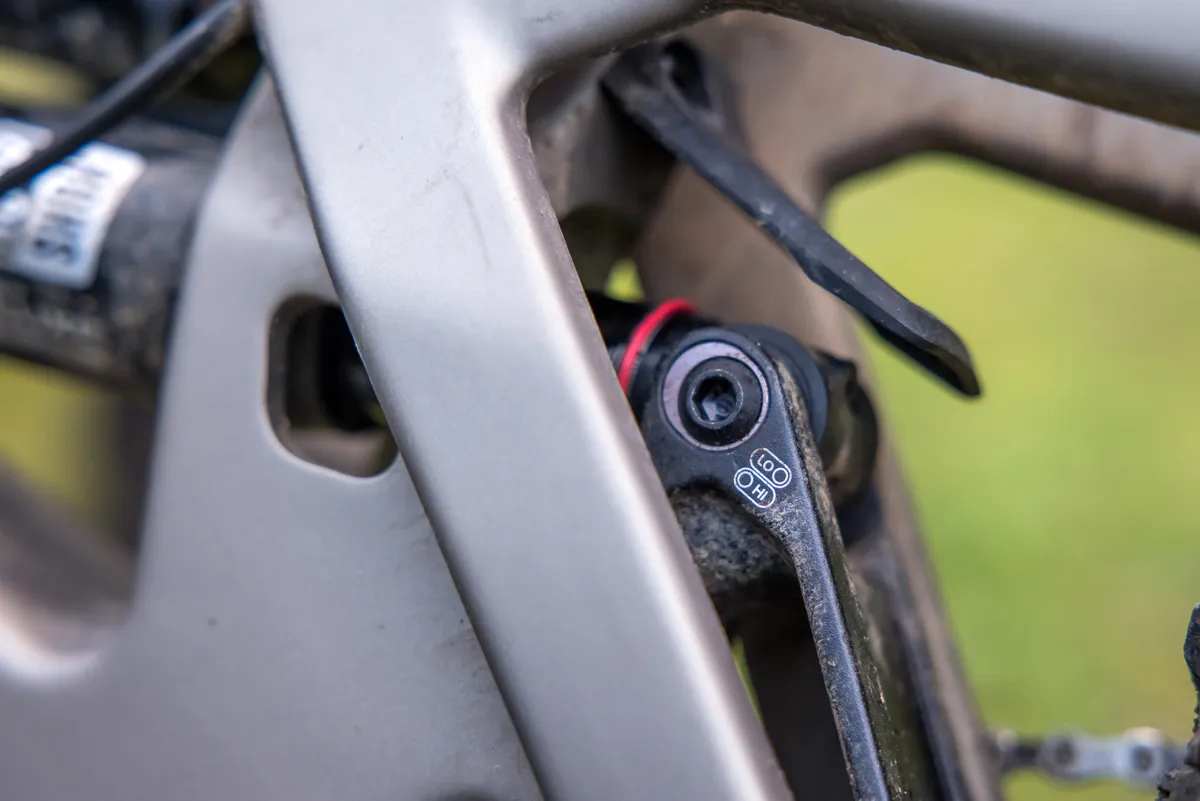
Changing to mullet wheels meant Santa Cruz had to modify the 5010’s geometry to suit. The aim was to “give the rider a sure-footed experience… without losing… its jump-happy, slalom-turn loving tendencies”.
Each of the 5010’s six sizes (XS to XXL) has specific chainstay lengths and seat tube angles, hopefully giving the bike’s shape proportionality as sizes increase.
| Frame | XS (high / low) | S (high / low) | M (high / low) | L (high / low) | XL (high / low) | XXL (high / low) |
|---|---|---|---|---|---|---|
| Head tube angle (degrees) | 65.2 / 64.9 | 65.2 / 64.9 | 65.2 / 64.9 | 65.2 / 64.9 | 65.2 / 64.9 | 65.1 / 64.9 |
| Seat tube angle (degrees) | 77.4 / 75.9 | 77.4 / 77.1 | 77.4 / 77.1 | 77.1 / 76.8 | 77.3 / 77 | 77.3 / 77.1 |
| Top tube length (mm) | 544 | 570 / 571 | 598 / 599 | 624 / 625 | 645 / 646 | 673 / 674 |
| Head tube length (mm) | 90 | 100 | 115 | 125 | 145 | 160 |
| Seat tube length (mm) | 370 | 380 | 405 | 430 | 460 | 500 |
| Rear Centre (mm) | 428 / 429 | 430 / 431 | 433 / 434 | 436 / 437 | 439 / 440 | 442 / 443 |
| Wheelbase (mm) | 1,147 | 1,178 | 1,212 / 1,213 | 1,239 / 1,240 | 1,271 | 1,305 / 1,306 |
| Reach (mm) | 410 / 406 | 434 / 431 | 459 / 456 | 479 / 476 | 499 / 496 | 524 / 521 |
| Stack (mm) | 599 / 601 | 608 / 610 | 622 / 624 | 631 / 633 | 649 / 651 | 662 / 664 |
A flip chip on the lower linkage shock mount permits geometry adjustment, changing the head angle by 0.3 degrees, from 65.2 and 64.9 degrees, and lowering the bottom bracket by 3mm from 338mm to 334mm.
Elsewhere, the size-large test bike’s key figures in the low setting include a 1,240mm wheelbase, a 476mm reach and a 76.8-degree seat tube angle.
Santa Cruz 5010 CC X01 AXS RSV MX specifications

Topping out the 5010’s range, the CC X01 AXS RSV MX features an almost no-holds-barred build kit.
Up-front is a 140mm-travel RockShox Pike Ultimate, matched with a Super Deluxe Ultimate air shock with hydraulic bottom-out control.
SRAM’s X01/GX AXS drivetrain is fitted with the brand’s 10-52t cassette, although Santa Cruz’s website states it should have a closer-ratio 10-50t model.
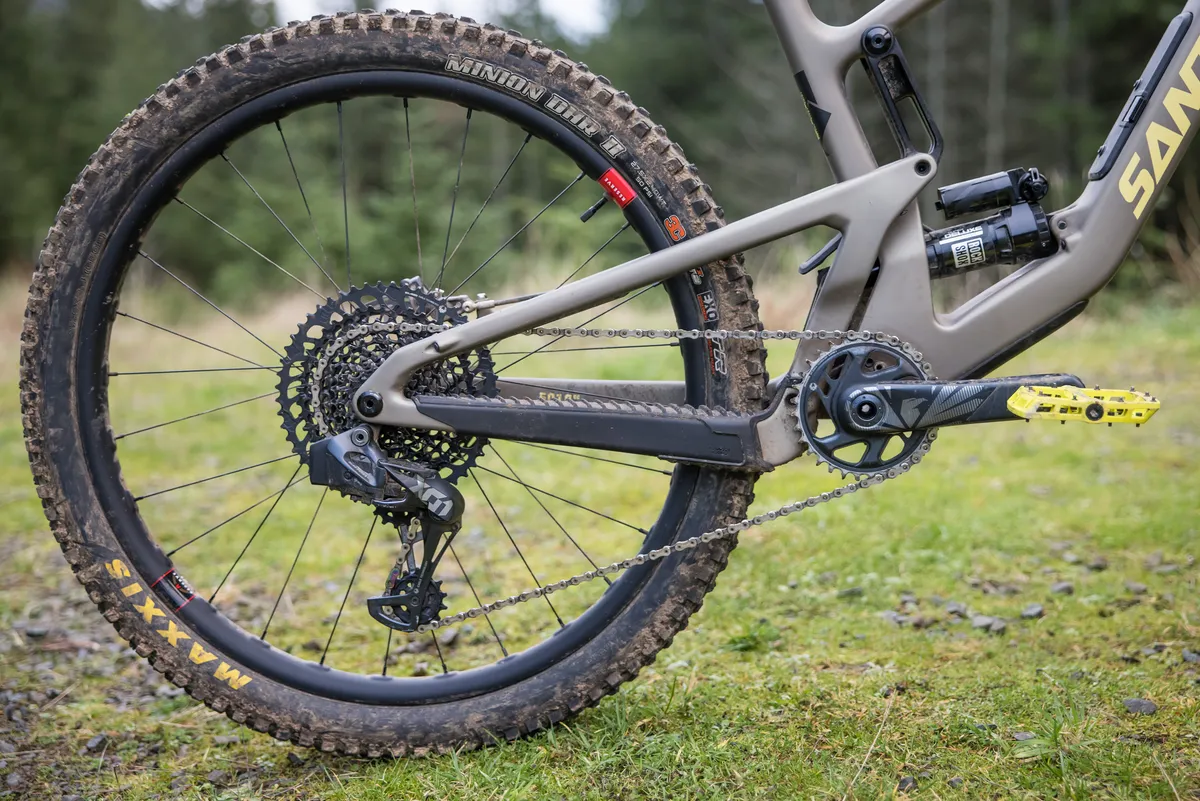
Continuing the SRAM theme are Guide G2 RSC brakes with a 200mm front rotor and 180mm at the rear.
There’s a hydraulic RockShox Reverb Stealth seatpost with 175mm of travel, with a WTB Silverado Medium Ti saddle bolted to it.
Santa Cruz’s Reserve 30HD rims are laced to Industry Nine 1/1 hubs and wrapped in Maxxis Minion DHR II EXO casing rubber front (MaxxGrip) and rear (MaxxTerra).

Santa Cruz’s 35 Carbon Bar is matched with Burgtec’s MK3 42mm stem.
My size-large test bike with a bottle cage, Tool Wallet and Tube Purse weighs 13.92kg without pedals.
Santa Cruz 5010 CC X01 AXS RSV MX ride impressions

I rode the Santa Cruz 5010 on my home trails in Scotland’s Tweed Valley, host to the UK’s round of the Enduro World Series and the upcoming 2023 cross-country world championships.
I took the bike on purpose-built trail centre loops and jump lines at the Glentress trail centre, off-piste enduro trails in Innerleithen and singletrack riding on open moorland. This encompassed the broadest range of conditions the 5010 is likely to be ridden on.
Santa Cruz 5010 CC X01 AXS RSV MX setup
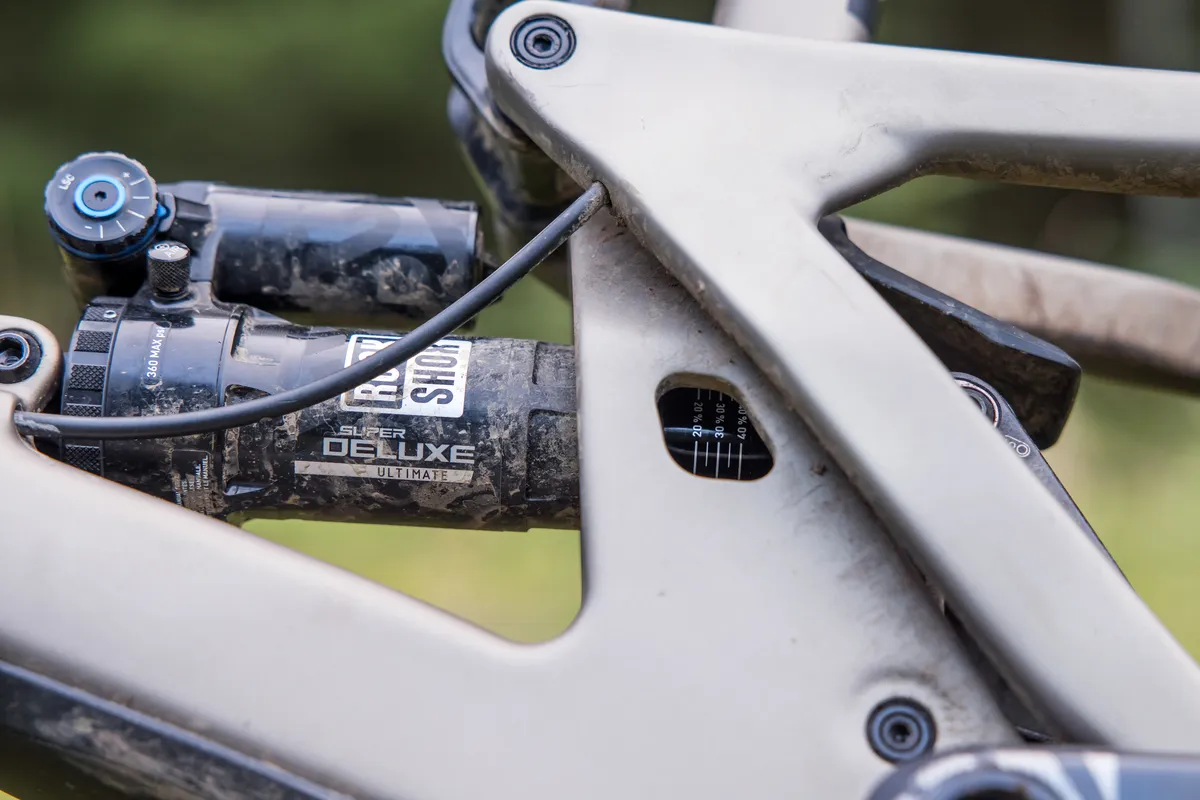
Setting up the 5010 was simple, helped by Santa Cruz’s online guide.
For my 76 to 77kg kitted-up weight, I inflated the rear shock to 180psi, which gave me the recommended 29 per cent sag.
I left the factory-installed purple volume-reducer spacer in the shock and fully opened the high- and low-speed compression dials and low-speed rebound.
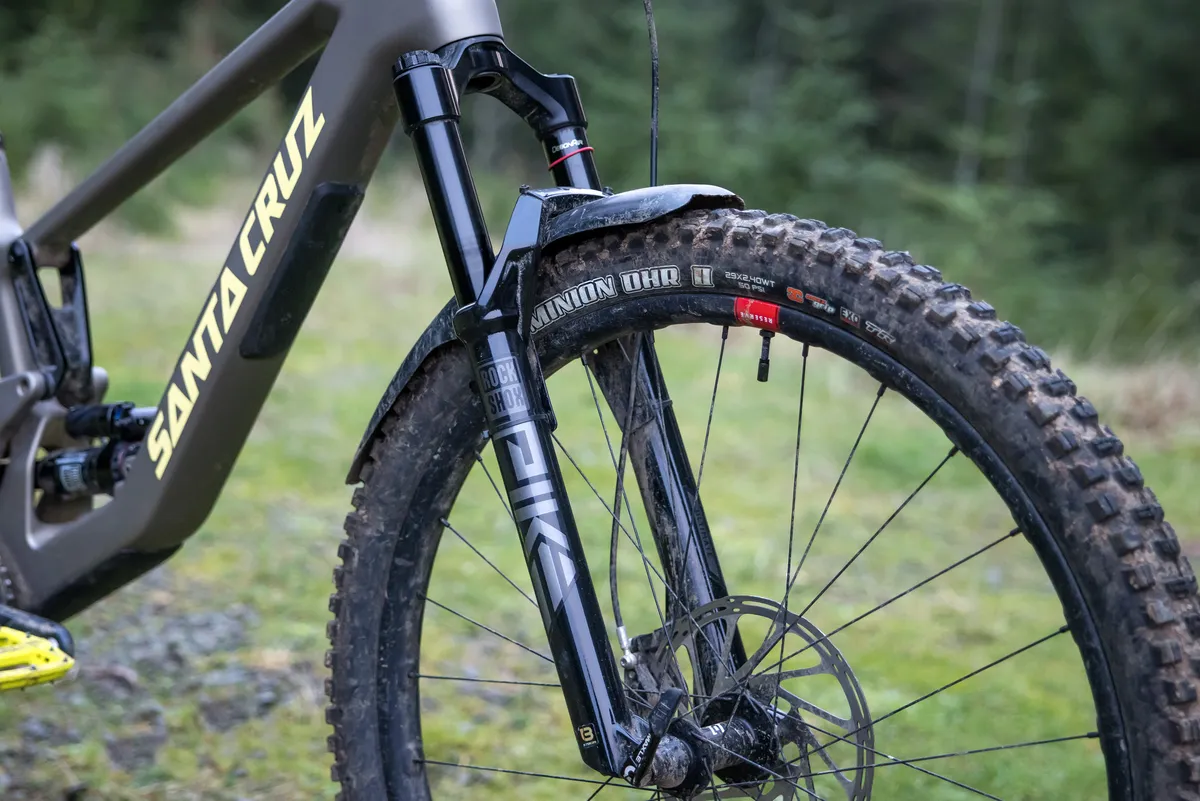
Initially inflating the fork to 75psi with no volume-reducer spacers, I added a single spacer during testing to improve bottom-out resistance.
At this pressure, with one spacer, the fork had 20.7 per cent sag.
I fully opened all the fork’s high-speed compression and low-speed rebound external damping adjustment, but settled on 7/14 clicks of low-speed compression adjustment.

Once I was comfortable with these settings, they remained unchanged for the duration of the test period.
After trying the geometry in its high position, I preferred the low setting even if it only slackened, lowered and lengthened the bike by a few degrees and millimetres.
Santa Cruz 5010 CC X01 AXS RSV MX climbing performance

Uphill, the 5010 is a tale of two halves.
Pedalling efficiency is unsurprisingly impressive when you’re seated, with the rear end of the bike remaining relatively static in its travel no matter how hard you hammer the pedals.
Standing up and pushing hard through the pedals creates more bob, although this can be mitigated by the rear shock’s compression threshold lever; just remember to open it prior to descending.
However, this level of pedalling efficiency doesn’t translate to high-speed, out of the saddle, uphill attacks. The 5010 has a somewhat lethargic demeanour.
Thanks to a combination of factors, including the small rear wheel, you feel you’re sat very low on the bike, with the front end feeling quite tall.
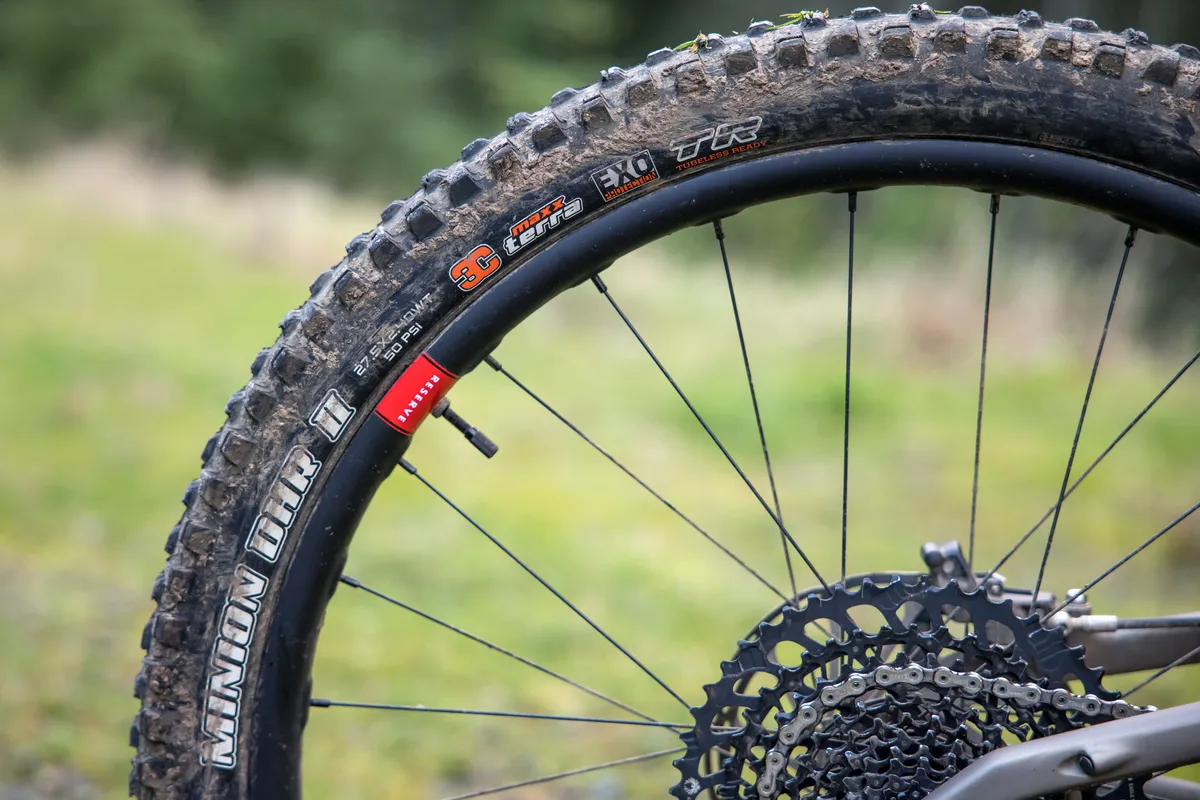
This exaggerates incline gradients when the front wheel points uphill, in effect canting your weight backwards when, in an ideal world, it would remain central and balanced.
Lowering my chest to the bars improved how it felt by weighting the front more; but without decreasing shock sag or dropping bar height, there was no mitigating this nose-high feel.
Adding to this is the seat tube angle. While on paper and in isolation it appears steep, out on the trail and in context with the rest of the bike’s figures, it feels quite slack, exaggerated by the front end’s height.
Adjusting the seat’s nose down and pushing it forward on the rails certainly helped position my hips more directly over the bottom bracket for improved pedalling efficiency, but a steeper seat tube angle would, in my eyes, be an improvement.

Thirdly, the sticky Maxxis rubber limits speed compared to less grippy compounds.
Combined, these factors make the 5010 feel more like an enduro bike than its travel, geometry and weight figures would suggest.
Decreasing rear-shock sag, lowering bar height and setting the bike to its high geometry position would reduce the low rear-end bias. However, it would negatively impact its descending performance, where the bike excels.
That said, comfort is good where the rear end flutters in and out of its travel, absorbing worn, beat-up trail centre surfaces well. This is also true when you’re on the gas – the rear end doesn’t lock up as much as the anti-squat figure would suggest it should – providing plenty of grip, helped by those Maxxis tyres.
Santa Cruz 5010 CC X01 AXS RSV MX descending performance

While the low rear end and tall front slow down progress on the climbs, it does quite the opposite when working with, not against, gravity.
Weighting the front end to drive grip isn’t a daunting affair; the front end is high enough to cope with the increased pressure without upsetting the bike’s balance.
Getting ejected over the bars on the 5010 feels highly unlikely.
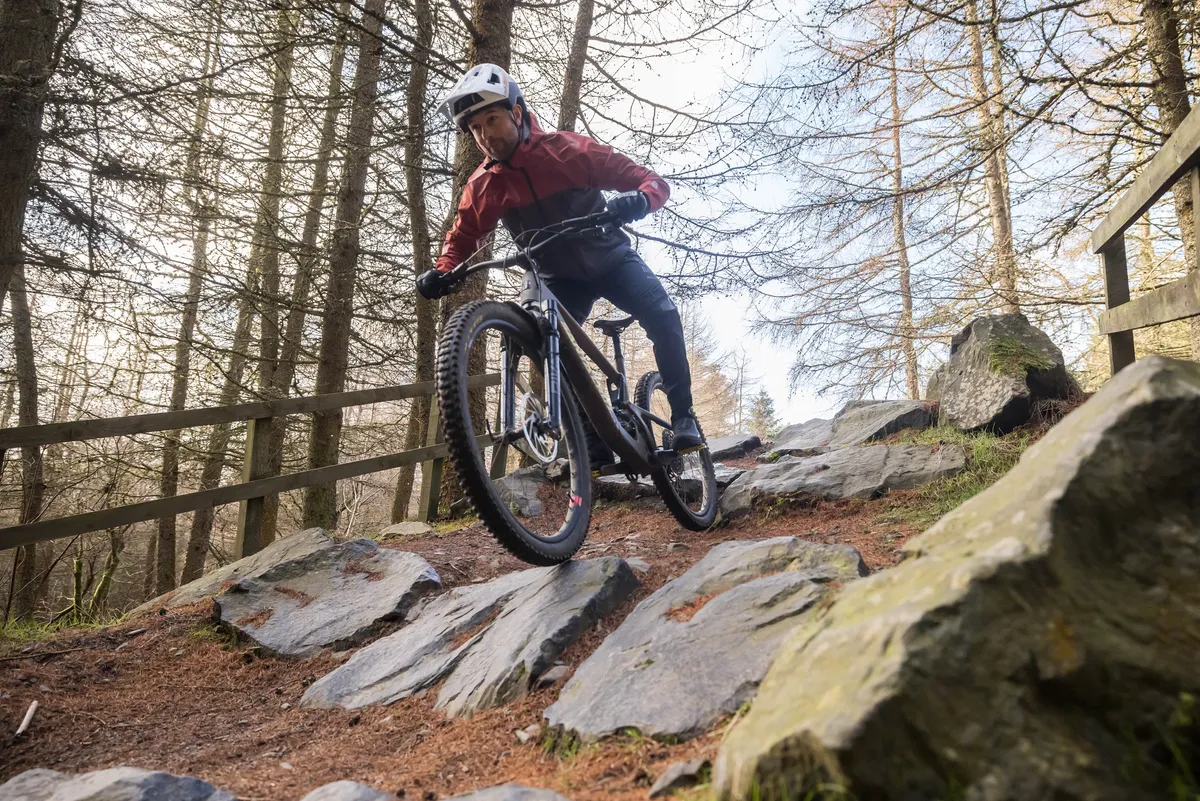
RockShox’s Pike has bucket loads of mid-stroke support, further aiding the 5010’s mighty front end. Weighting the front and trusting the support is the best way to get the 5010 to ride and turn.
However, weighting it so confidently has a side effect; the rear end – although ground-hugging low – breaks traction easily and readily.
Loud, exaggerated hip movements instigate drifts and slashes almost instantly; the rear end needs little to no coercion to snake and slide down the trail’s contours.
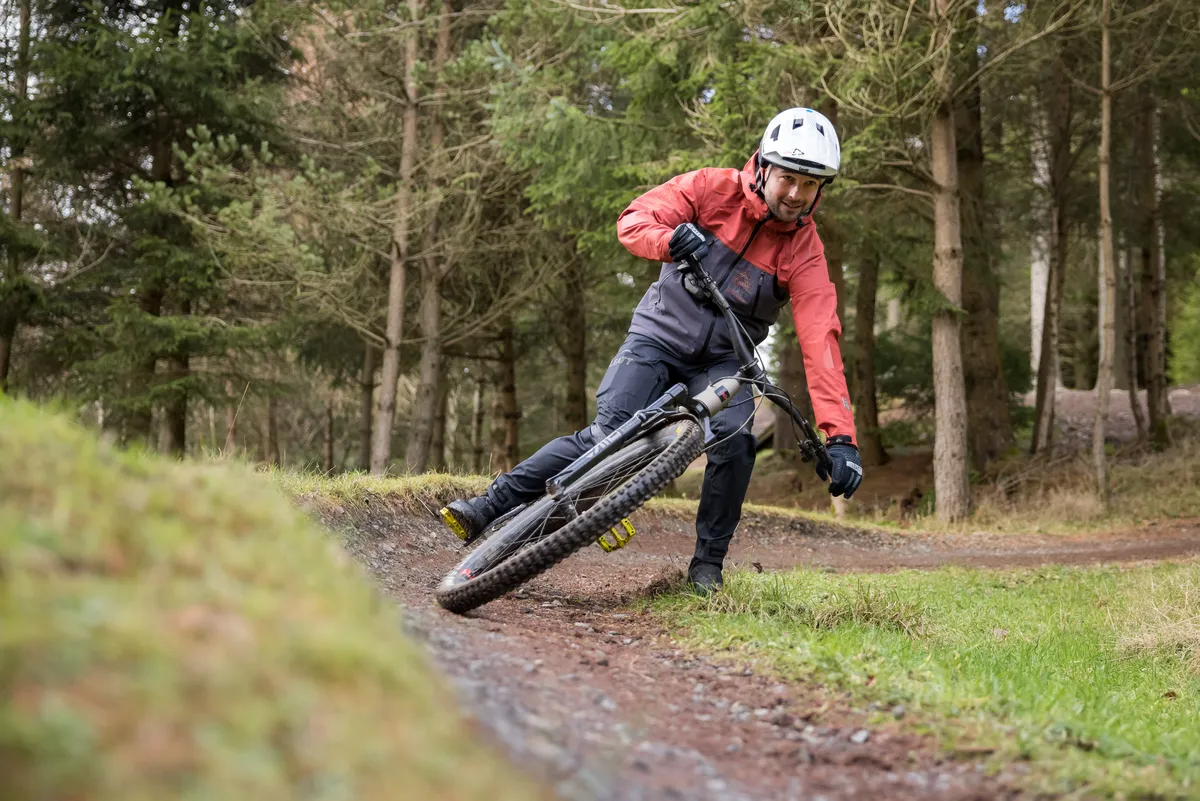
How the bike positions the rider – where the front end needs weighting more than usual, pulling your weight forward on the bike – gives it this rather fun-loving flicky rear end.
Despite the chunky Maxxis MaxxTerra rear tyre, grip certainly isn’t a priority on the 5010. Given its compact nature, drifts are fairly easy to control, but it’s not as predictable or easy to rein in as bigger bikes, where it’s over-responsive to rider inputs.
While getting wild is fun and engaging on less technical terrain, a gentle touch is required to keep it in check on gnarlier trails.
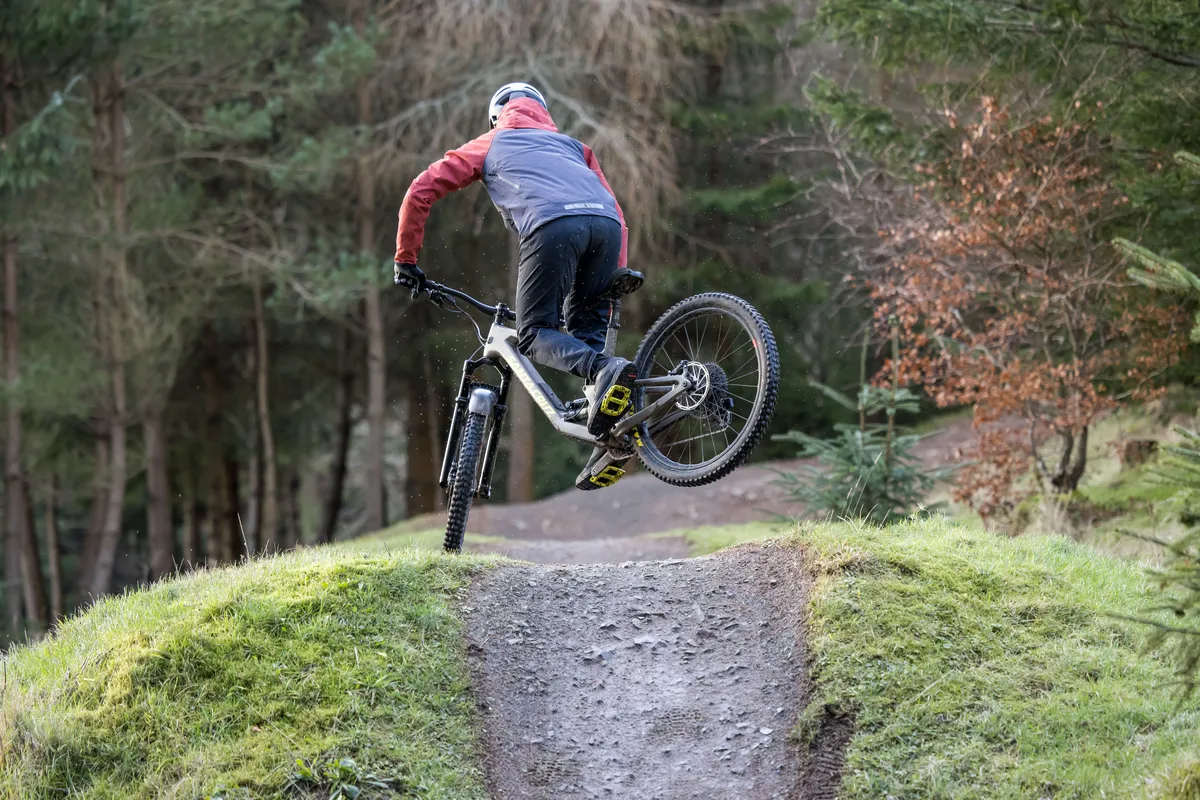
Ridden without care, it’s possible to get yourself into a pickle quickly. While the suspension has plenty of support, multiple successive or unplanned big hits use up the 140mm front and 130mm rear travel, leaving the bike with little in reserve to help get you out of trouble.
Over particularly choppy terrain at high speed, it has a rather visceral, raw feel. The suspension’s most supple and active portion is gobbled up quickly, leaving you to do a significant portion of the heavy lifting to keep the bike pointing in the right direction.
However, reduce speeds and even on technical trails the limits of its suspension and geometry prove to be less of an issue; keeping everything in check isn’t overly laborious.

Less technical trails with jumps, pumps and berms are a total blast, though. The progressive rear end and supportive fork help generate loads of pop, which makes boosting skyward or generating speed intuitive and easy.
Its easy to manoeuvre and control rear end, combined with the high front, only add to the fun. Muscling it around and sending it skyward is a consequence-free affair – it feels closer to a jump bike than a trail bike.
How does the Santa Cruz 5010 CC X01 AXS RSV MX compare to the Marin Rift Zone 29 XR?

Ignoring the three-fold cost difference between this 5010 and the Marin Rift Zone XR for one minute, the two bikes share quite a few elements.
Both have 140mm of front and 130mm of rear-wheel travel, and similar geometry figures with only small differences. For example, the 5010’s reach is 476mm (large, low-geometry position) versus the Rift Zone’s 485.
The Rift Zone’s chainstay and wheelbase are 430mm and 1,235.4mm respectively, while the 5010’s are 437mm and 1,240mm (large, low-geometry position).
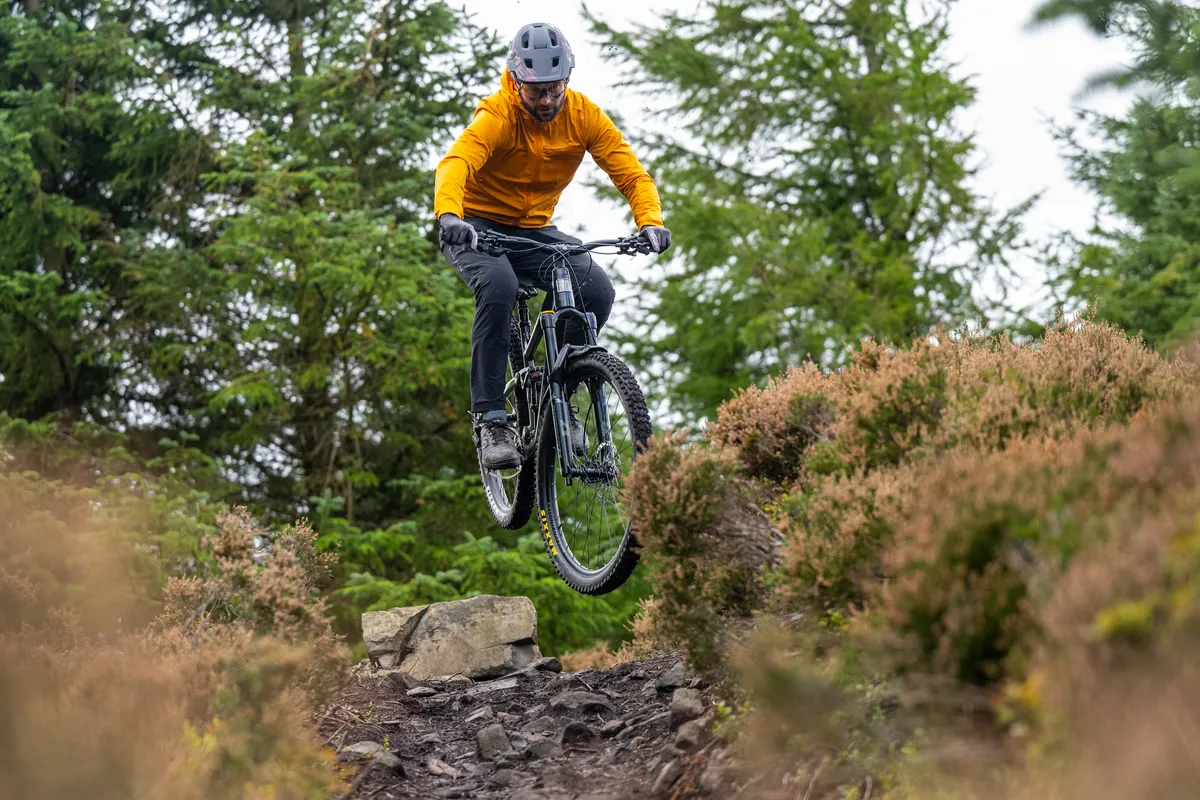
However, out on the trail the gap between how they ride is as far apart as their prices.
The biggest difference is the 5010’s mullet setup compared to the Rift Zone’s 29in front and rear wheels.
This edges the Rift Zone ahead in terms of control, composure and bump rollover. When ridden on the same terrain as the 5010, it’s much smoother and faster, making lighter work of technical sections.

Grip is easier to tap into on the Rift Zone. Its rear end is less prone to breaking traction unless encouraged to do so, where more effort is required to get it to snake and drift down the trail compared to the 5010. This gives it a more controlled ride overall.
The full 29er version of the Rift Zone is fractionally less flickable than the mullet 5010. However, Marin has catered for the jib-obsessed with a 27.5in version, rather than trying to blend the riding characteristics of two bikes into one.
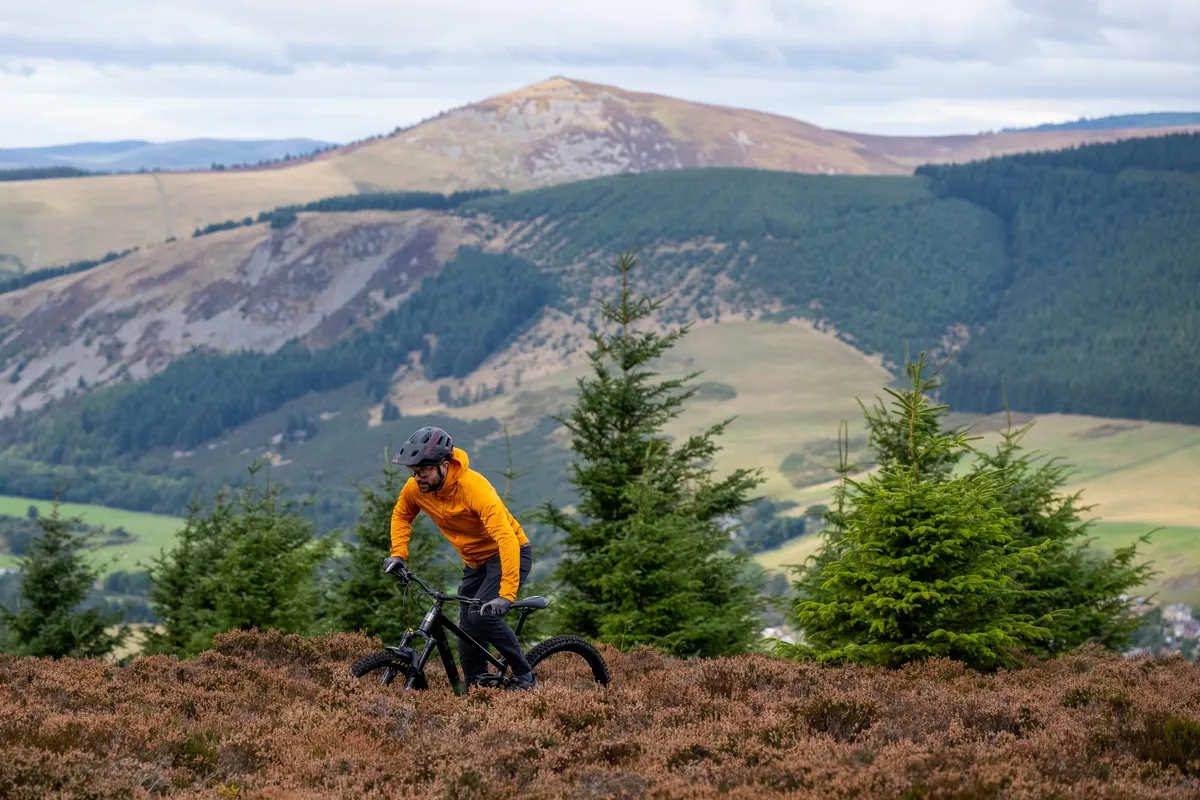
Turning back to the vast price difference makes vouching for the 5010 even trickier, given the performance of each bike. More affordable versions of the 5010 exist, but even the least costly is still £2,000 more than the Rift Zone. If it was my cash, I’d be struggling to justify the extra spend for the 5010’s carbon fibre frame.
Santa Cruz 5010 CC X01 AXS RSV MX performance details
- RockShox Pike Ultimate: While the Pike has plenty of mid-stroke support and loads of bottom-out resistance, plus impressive low-speed compression damping, it lacks suppleness. This gives low-amplitude, high-frequency bumps an element of harshness and can impact grip and comfort on sustained rough sections.

- RockShox Super Deluxe Ultimate: In contrast, the Super Deluxe is impressively smooth at the start of its travel with progression that builds through to match the Pike well. Its hydraulic bottom out cushions even the clumsiest, hardest landings, making it well matched to the 5010’s inclination for air time.
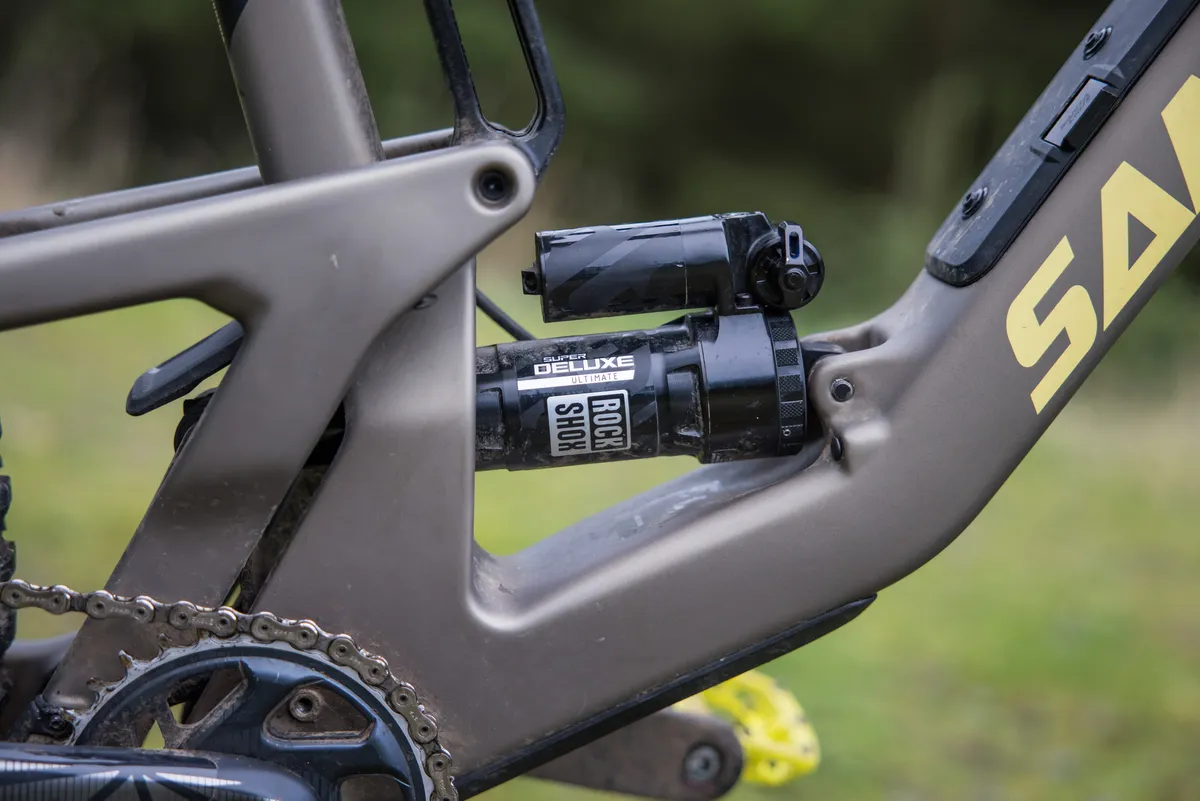
- SRAM Guide G2 RSC: The second-tier Guide G2 brakes have pinned lever blade pivots instead of bolts and bearings, giving them a cheaper feel. The rear 180mm rotor is quick to overheat on steeper descents, detracting from the bike’s performance. This is less of an issue on flow trails, but a 200mm rear rotor would only improve it.
Santa Cruz 5010 CC X01 AXS RSV MX bottom line
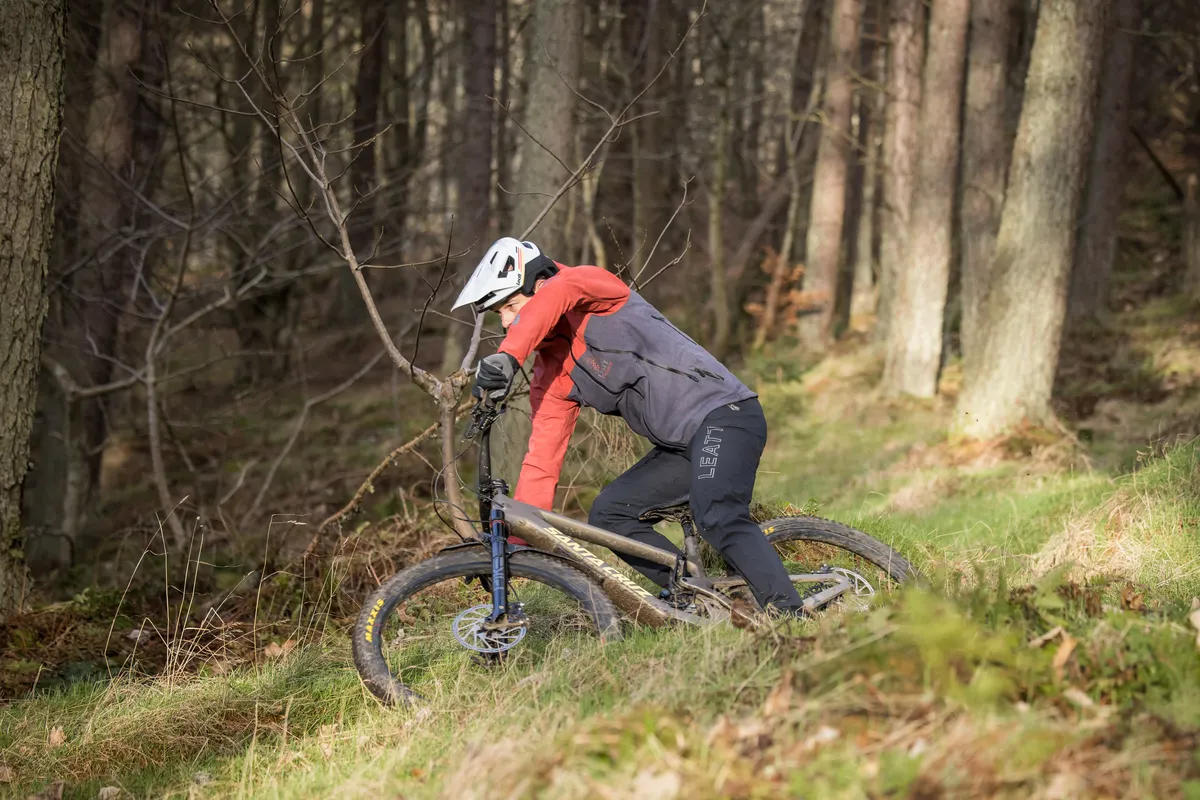
Santa Cruz’s 5010 excels on fun-focused, tamer trails, rather than being an all-out trail bike brawler capable of tackling gnarly terrain at high speed. It’s best suited to sedate ascending, where pushing yourself hard doesn’t equate to rewarding speed increases.
Riders wanting to session jumps, hit flow trails or pop and ping their way down their local are still going to love this version of the 5010. However, it lacks the diversity of a true trail bike, which pigeonholes it more than other offerings on the market.
Its steep asking price is hard to ignore and poses questions around the 5010’s value, given its rather narrow performance band.
Product
| Brand | Santa_cruz |
| Price | £9199.00 |
| br_whatWeTested | Santa Cruz 5010 CC X01 AXS RSV MX |
| Weight | 13.92kg |
Features
| Fork | RockShox Pike Ultimate |
| Stem | Burgtec Enduro MK3, 42mm |
| Chain | SRAM GX Eagle |
| Frame | 5010 CC |
| Tyres | Maxxis Minion DHR II 3C MaxxGrip EXO TR 29x2.4in f, Maxxis Minion DHR II 3C MaxxTerra EXO TR 27.5x2.4in r |
| Brakes | SRAM Guide G2 RSC |
| Cranks | SRAM X1 Eagle Carbon |
| Saddle | WTB Silverado Medium Ti |
| Wheels | Santa Cruz Reserve 30 HD rims on Industry Nine 1/1 hubs |
| Headset | Cane Creek 40 |
| Shifter | SRAM GX Eagle AXS |
| Cassette | SRAM XG1275 Eagle, 10-52t |
| Seatpost | RockShox Reverb |
| Grips/tape | Santa Cruz House Grips |
| Handlebar | Santa Cruz 35 Carbon, 800mm |
| Rear shock | RockShox Super Deluxe Ultimate |
| Bottom bracket | SRAM DUB |
| Available sizes | XS, S, M, L, XL, XXL |
| Rear derailleur | SRAM X01 Eagle AXS |
| Features | Frame storage, Tool Wallet and Tube Purse, Sag Window |
